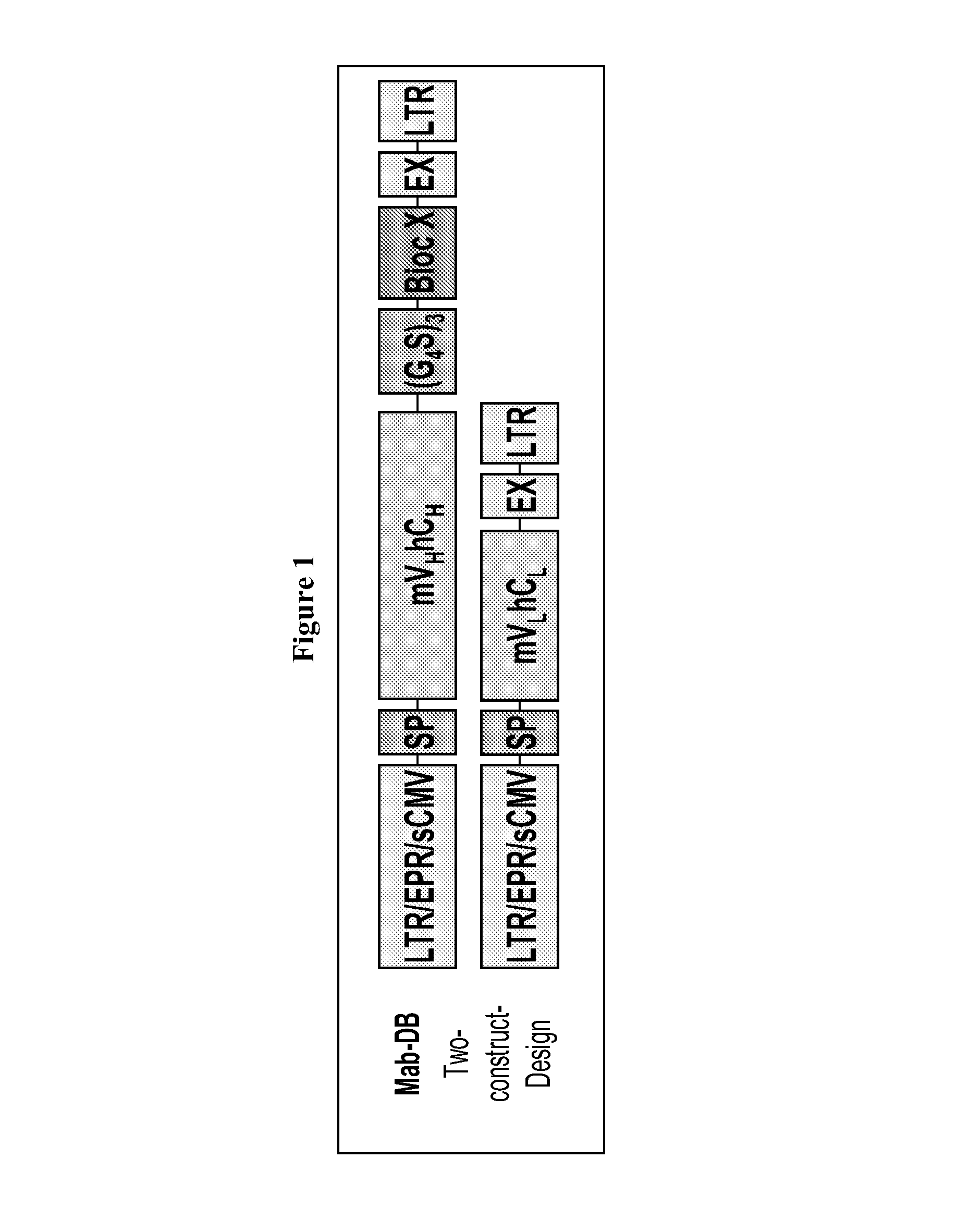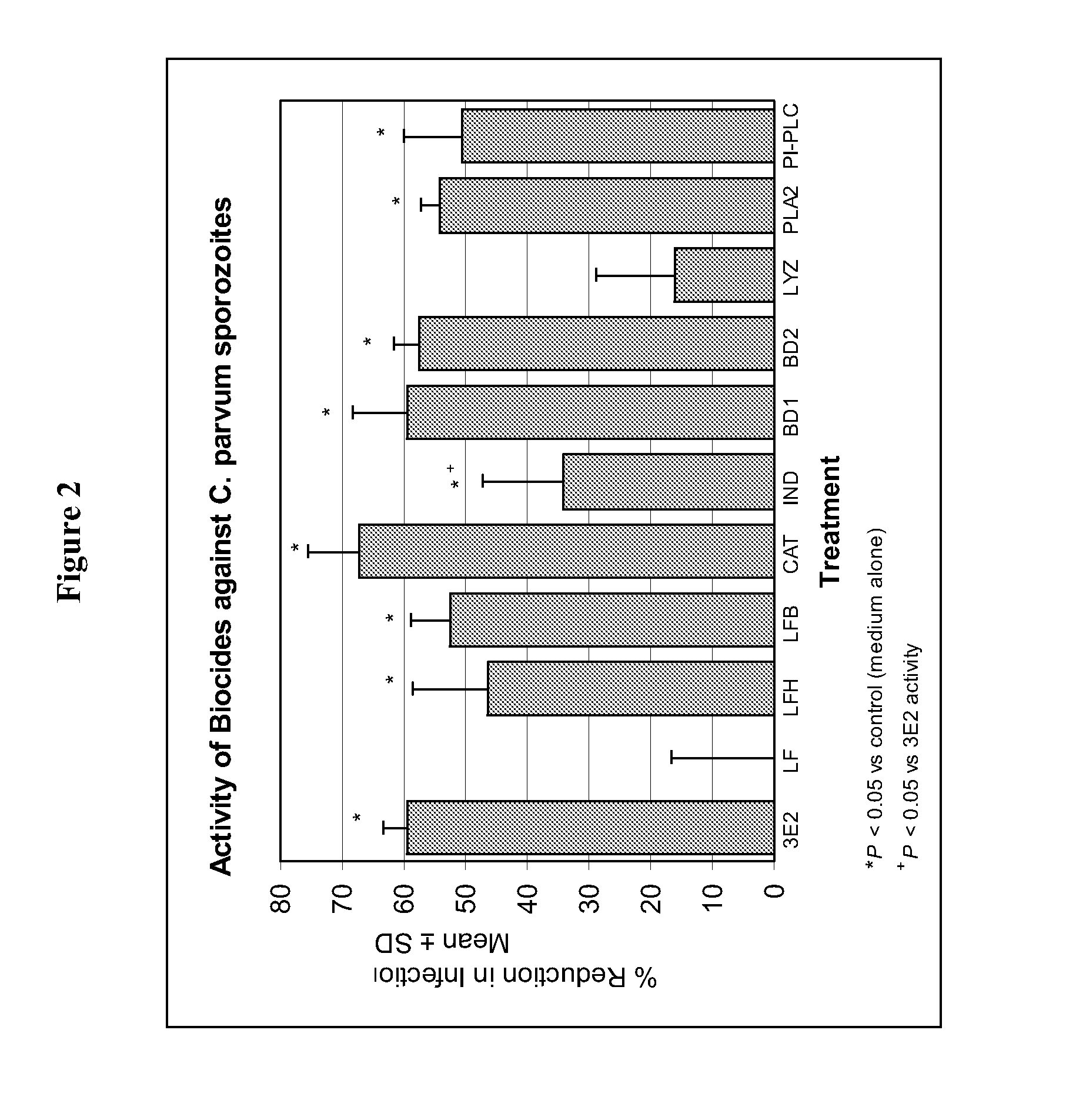Targeted cryptosporidium biocides
a biocide and cryptosporidium technology, applied in the field of fusion proteins, can solve the problems of large outbreaks, chronic diarrhea with weight loss and wasting, and large burden on society of cryptosporidium
- Summary
- Abstract
- Description
- Claims
- Application Information
AI Technical Summary
Benefits of technology
Problems solved by technology
Method used
Image
Examples
example 1
Molecular Engineering to Make Anticryptosporidial Recombinant Antibodies and Antibody Biocide Fusions
[0220]Hybridoma cell lines, established at the University of Arizona (Schaefer et al., Infect Immun 2000 May; 68(5):2608-16), for 3 different antibodies (3E2, 4H9, 18.44), plus a non-cryptosporidial hybridoma, 166, for a control (Ziegler H K, Orlin Calif. Analysis of Listeria monocytogenes antigens with monoclonal antibodies. Clin Invest Med 1984; 7(4):239-42) were the starting material for total RNA extraction. Total RNA was reverse transcribed into cDNA and used as a template for PCR. Separate sets of degenerate primers were used to either amplify the heavy chain or the light chain variable coding region. Since the degenerate primers anneal to the signal peptide region of the immunoglobulin coding regions, the endogenous hybridoma-derived signal peptide was replaced with a standard signal peptide used for all constructs. The resulting PCR products were cloned into a PCR cloning vec...
example 2
Methods
[0237]This example describes exemplary methods for the development of additional directed biocides.
[0238]Chimeric Human-Mouse Immunoglobulin Fusion Protein that Bind to Both C. hominis and C. parvum
[0239]Six candidate MAb were selected based on i) specific binding to the surface of sporozoites of both species; ii) expression level in the hybridoma cell line; iii) specificity for 4 different surface antigens. Prior to molecular engineering, supernatants from hybridoma cell lines are tested for required optimal expression levels (recombinant antibodies derived from low expressing hybridoma cell lines tend to be expressed at low levels in CHO cell expression system). Total RNA is extracted from freshly grown hybridoma cells. RNA is reverse transcribed using oligo dT primer to generate cDNA from mRNA transcripts. This cDNA is used for extraction of the immunoglobulin variable coding region of the heavy and light chains. In some embodiments, the Ig-Primer Set kit from Novagen (EM...
example 3
Activity of Directed Biocides Against C. hominis
[0282]This Example describes the in vitro killing of C. hominis by directed biocides. Experiments were performed as described in Example 2 above. Results are shown in FIG. 15. FIG. 15 shows in vitro viability of C. hominis upon exposure to directed biocides.
PUM
| Property | Measurement | Unit |
|---|---|---|
| concentrations | aaaaa | aaaaa |
| molecular weight | aaaaa | aaaaa |
| volumes | aaaaa | aaaaa |
Abstract
Description
Claims
Application Information
 Login to View More
Login to View More - R&D
- Intellectual Property
- Life Sciences
- Materials
- Tech Scout
- Unparalleled Data Quality
- Higher Quality Content
- 60% Fewer Hallucinations
Browse by: Latest US Patents, China's latest patents, Technical Efficacy Thesaurus, Application Domain, Technology Topic, Popular Technical Reports.
© 2025 PatSnap. All rights reserved.Legal|Privacy policy|Modern Slavery Act Transparency Statement|Sitemap|About US| Contact US: help@patsnap.com



